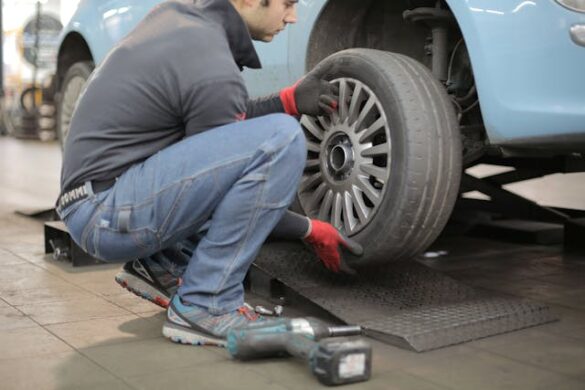There are many safety features in modern vehicles that are used to protect occupants in the event of an accident. Certain safety features are used for prevention and one such example is TPMS or Tyre Pressure Monitoring System. These systems are standard in many countries and are used to maintain optimal tyre pressure and improve overall vehicle safety.

Tyre pressure monitors are used to monitor the air pressure inside pneumatic tyres. And tyre pressure information is reported in real time to the driver via a pictogram display, gauge or low pressure warning light. There are direct and indirect types of tyre pressure monitoring systems. The direct system uses sensors that are mounted within the tyre or on the wheel to measure pressure. The data is transmitted by the sensors to the onboard computer system of the vehicle and the driver will be alerted if the pressure of the tyre falls below the recommended level. When it comes to indirect tyre pressure monitoring systems, they will use wheel speed sensors from ABS or anti-lock braking system to compare the rotational speed of every tyre. If one tyre has low pressure, its radius will be smaller than others and will tend to rotate faster. This information will be used to determine that a tyre is underinflated and the driver will be then issued a warning.
There are many benefits of using tyre pressure monitoring systems
You can prevent tyre blowouts which is something that can cause you to lose control of the vehicle. It is usually underinflated tyres that are more prone to blowouts and this is due to increased sidewall flexing and building up of heat. You will be alerted of low pressure if you have a monitoring system and you will be able to address the issue before it leads to failure. Proper tyre pressure is important for optimal vehicle handling and it will also contribute to vehicle stability. When the tyres are not inflated properly, the steering response of the vehicle is negatively affected along with cornering and overall stability. When your tyres have the correct pressure, they are able to maintain better contact with the road surface which will ensure effective braking. There will be uneven wear on your tyres when they are underinflated. This can reduce traction and increase the stopping distance.

Proper tyre inflation
Can improve fuel efficiency as well because rolling resistance can be reduced. With underinflated tyres, you need to have more energy to roll and this can lead to consuming more fuel. You can ensure better fuel economy as a result of the tyre pressure monitoring systems. And when you have proper tyre pressure, it can extend the life of tyres. Tyres will wear out unevenly and quickly when they are over or under inflated. And this can lead to replacing the tyre prematurely. With monitoring systems, the tyres will last longer. Many regulatory bodies around the world have mandated the use of tyre pressure monitoring systems in new vehicles so that automotive safety can be enhanced.


